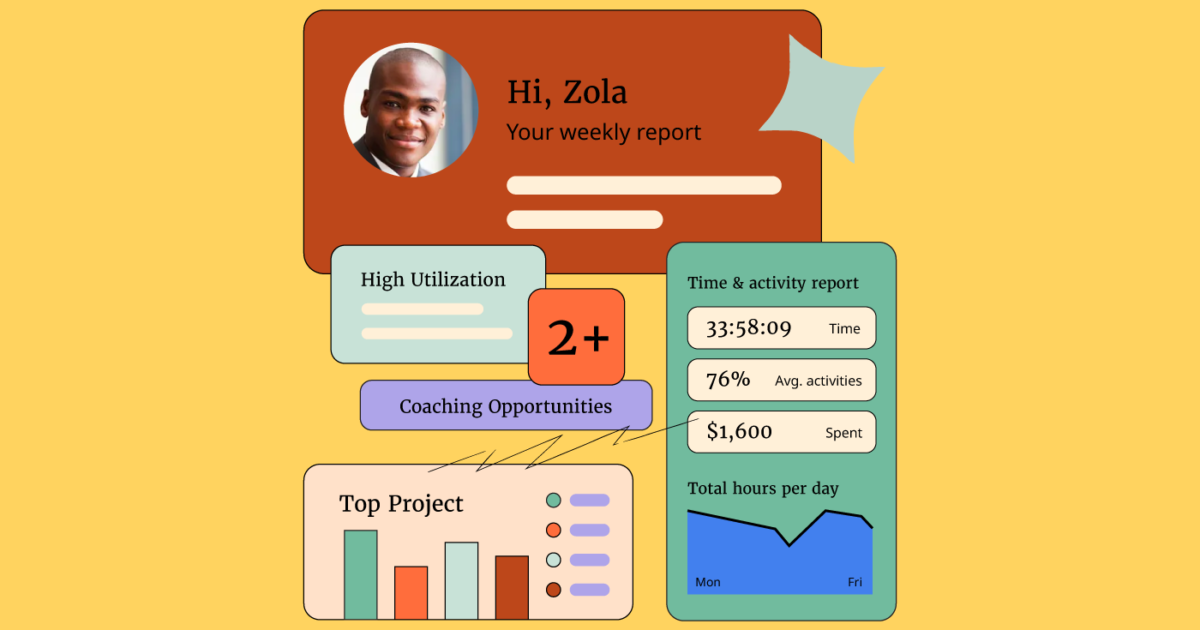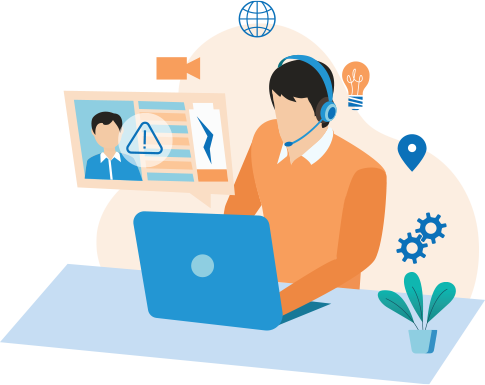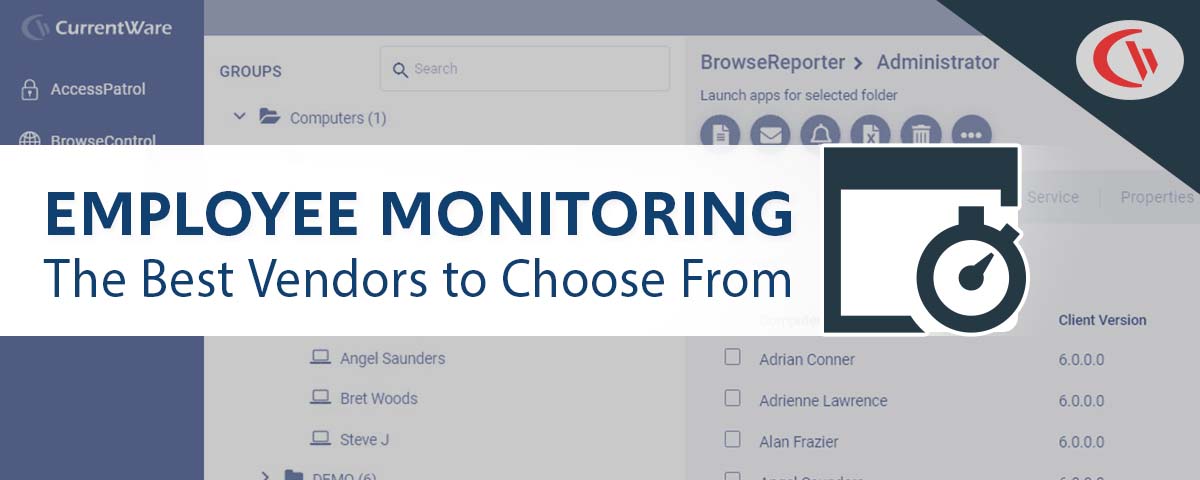Great Info To Picking Time Tracking Monitoring Services
What Is Employee Monitoring Software And What Do I Need To Know About It Before Deciding?The term"employee monitoring software" is used to refer to the software that companies use to monitor their employees' activities when they work. Employers can use it to collect information on a variety of aspects related to employee behavior. This includes Internet usage as well as application usage as well as screenshots, keystrokes and other information. The primary purpose of employee monitoring software is to improve productivity, make sure that employees are in the compliance of company guidelines, protect confidential data, and resolve security issues. There are a variety of factors to consider when choosing an employee-monitoring program. These are the main points to keep in mind to consider: Features- Choose which features your company requires according to your needs. Features include email monitoring activities, blocking websites keystroke recording and tracking the usage of applications, and email monitoring. Prioritize the features you want to use based on your monitoring goals.
Compliance and Privacy- Check that the software is compliant with legal and ethical guidelines in monitoring employees. Make sure you are aware of the regulations and laws in your state. This covers privacy and data protection laws. Look for software that provides transparent and configurable settings to respect employee privacy rights.
User-Friendliness: Consider the program's accessibility and user-friendliness. Easy-to-use interfaces and simple setup processes can speed up the process and make it easier to implement. Dashboards that can be customized and the intuitive tools for reporting can help you easily navigate the data.
Integration and compatibility – Check whether the software integrates seamlessly with your current infrastructure and other systems you currently use. These include operating systems as well as email clients. The compatibility permits seamless monitoring of your systems without disrupting normal activities.
Data Security: Examine the security measures of the software to ensure protecting the information collected. Security protocols, encryption, safe storage of data, and access control are essential. Make sure the software vendor is known for its strong data protection records and has strong security measures.
Scalability- Think about the capacity of the software to support the growth of your business. Choose software that will easily expand to meet the requirements of your company in the event of hiring more people or opening new locations.
Reporting and Analytics The software's reports and analytics features. Look for features that provide extensive insights into employee productivity, timing allocation, and trends. Customizable analytics and reports help you identify improvement areas and help you make educated choices.
Customer Support: Evaluate the quality of customer support provided by the software company. You can assess their speed of response, accessibility, and the technical assistance that they provide. A professional customer support staff will be able to provide immediate assistance to any issue that might occur.
Cost – Consider the pricing structures of the software. Learn about the pricing structure, which includes any additional costs for support, updates or additional features. Make a budget for your purchase according to the features and value offered.
Transparency and Communication with Employees Communication with employees should be clear and openness when working with employees in relation to the monitoring software. The purpose and scope of monitoring in a transparent manner. Be sure to address any concerns, and ensure they understand that their privacy will still be respected.
These aspects will allow you to make a more informed choice about the software for employee monitoring that you pick. Follow the best employee monitoring services for blog info.

What Are The Features Available In The Employee Monitoring Software And What Are The Differences Between Them?
Software that monitors employee behavior offers various features that can be used to monitor and analyze the behavior of employees. Different software applications may have various features, but they are generally the most used. It provides a complete description of the activities employees engage in at work.
Keystroke Logging Keystroke logs track every single keystroke made by employees. It can help to identify productivity issues, identify illegal activity, and provide evidence if necessary.
Screenshots or Screen Recording Some software captures regular screenshots of employee computer screens, whereas others record their screens live. This feature is useful for monitoring productivity of employees, confirming compliance or troubleshooting problems.
Internet Usage Tracking - This feature tracks employees' online activities, such as searched queries, visited websites, and downloads. This feature helps to identify excessive browsing that is not related to work, potential security risks, and violation of policies.
This feature tracks all applications employed by employees at work. It helps to identify unapproved or excessive usage of applications by providing insights into the applications frequently used.
Email Monitoring – Email monitoring allows employers to monitor employee email that include received and sent messages, as well as email content. It is a great way to enforce company policies, protect data, and investigate suspicious activities.
Tracking of documents and files This feature monitors modifications to files, transfers, and changes to documents. It protects sensitive data as well as monitor document collaboration and ensure compliance with data security policies.
Remote Monitoring - Employers have the ability to supervise employees who work remotely or in different locations. Employers can monitor their work and monitor the efficiency of employees regardless of where they are.
Productivity Analysis- Employee monitoring software often comes with productivity analysis features that offer insight into work patterns of employees as well as time allocation and overall productivity levels. These analyses can help to identify areas of improvement and optimize workflow.
Reporting and Analyses- Robust analytics and reporting capabilities provide detailed reports and graphs using the data collected. These reports offer valuable insight into the performance of employees in time management, as well as resource allocation.
Compliance and Policy Management- Some software solutions have features that help ensure compliance with regulations of the industry and company rules. Employers can define and enforce policies related to acceptable computer use, internet access, and security of data.
Alerts and Notifications Alerts notify managers and employers of certain events. They can alert to excessive internet use or attempts to gain access to restricted websites or suspicious behaviour.
It is essential to recognize that these features may differ depending on the software solution you choose. Consider features that will assist you in reaching your goals for monitoring and that also meet the legal and ethical standards in your region. Follow the top rated time tracking monitoring software for site info.

What Is The Law Of Compliance And Privacy For Employee Monitoring Software?
Respecting privacy and compliance laws is an essential aspect of employee monitoring software. Here are a few methods that employee monitoring software complies with compliance and privacy laws, despite the fact that the legal requirements vary between jurisdictions. Consent and notification- Many jurisdictions demand informed consent by employees and demand that they be notified of surveillance activities prior to. Employee monitoring tools usually include options that permit employers to communicate with their employees in a clear and concise manner. This can be done through the use of written notices sent to employees, obtaining their consent through consent forms, or by implementing a handbook outlining monitoring practices.
Transparent Monitoring Policies- Employee monitoring tools promote transparency. They help employees understand what types of information are being collected and why, as being aware of the extent of monitoring. Employees can better know their rights to privacy and the limits of monitoring when policies are clearly and thorough.
Data Minimization Principles - Employee monitoring software often employs data minimization principles to comply with privacy laws. The software collects and retains only the necessary data, while eliminating unnecessary or overly detailed information. By limiting data collection to what is necessary to monitor purposes This software minimizes the risk of privacy and increases compliance.
Certain software for employee surveillance anonymizes, or aggregates, information to ensure the privacy of employees. Anonymization erases personally identifiable information (PII) from the data collected which makes it impossible to associate data with specific people. Aggregation combines data from multiple employees to offer insights at an aggregate level, without single out specific individuals.
Secure Data Store and encryption Employee monitoring software places the security of the data it collects first. It employs encryption and secure data storage methods. encryption to guard data against unauthorised access, breach, or accidentally disclosed data. This includes protecting data while traveling and also at stationary.
Access Controls, Restricted Permissions – In order to make sure that the company is in compliance with laws employee monitoring software offers granular permissions and access controls. Employers can limit the access to the monitoring information to those who need it to fulfill legitimate requirements, such as HR personnel and administrators designated by the company.
Rights of Employees RightsRespecting the rights of employees means ensuring compliance with privacy legislation. Software used to monitor employees often comes with features that permit employees to access their monitoring data as well as request corrections and submit complaints. Employees are able to make use of their rights and to seek remedies in case of privacy violations.
Conformity with Data Protection Regulations- Employee monitoring software is designed to be in compliance with the applicable regulations on data protection, such as the General Data Protection Regulation (GDPR) in the European Union or the California Consumer Privacy Act (CCPA) in the United States. Compliance requires implementing the necessary measures to protect data subjects' rights and guarantee lawful processing.
Although employee monitoring software can aid in compliance efforts in certain situations, it's essential to seek legal advice from professionals to stay up-to-date on the relevant laws and regulations within their respective jurisdictions. To adhere to the privacy and compliance laws an extensive approach is essential that goes beyond software. It should include clear policies and education for employees, as as ongoing compliance monitoring. Take a look at the best time tracking monitoring service company for site tips.
